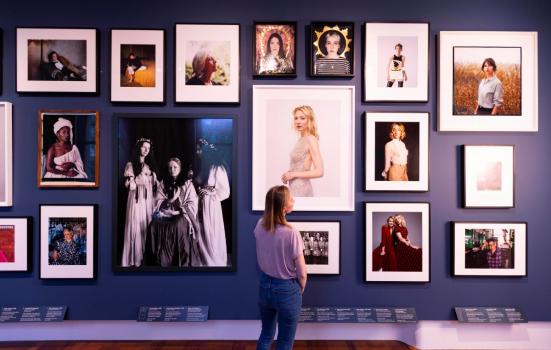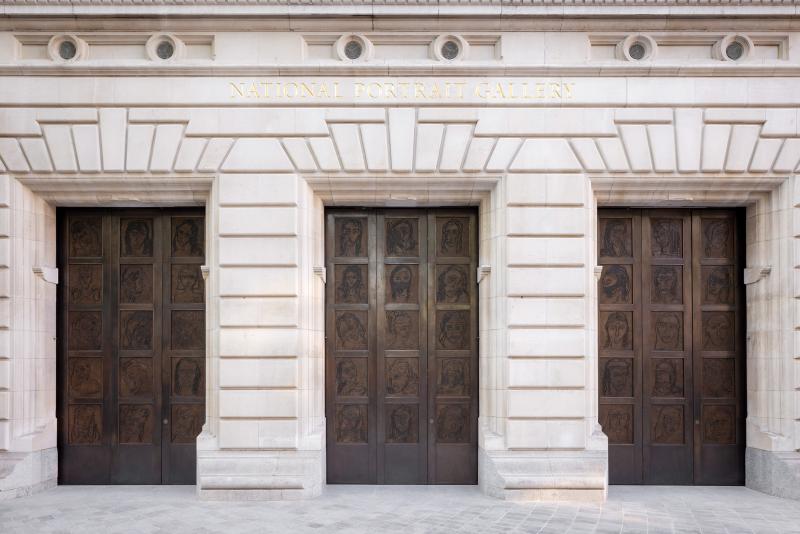The National Portrait Gallery has reopened after a three-year refurbishment. Its Director, Nicholas Cullinan and Andrea Sullivan of the Bank of America discuss how their partnership will improve access for young people - and why that's so important.

David Parry
Making the arts affordable for the next generation benefits us all. The power of partnership can help.
The National Portrait Gallery (NPG) has this month reopened its doors after a three-year transformation project which has made the gallery more welcoming and accessible. It is the most extensive transformation in its history and a landmark moment for the arts.
Faced with increases in the cost of living, which have an unequal effect on society, it is vital to extend access to those who experience barriers to participation. As a gallery of people, for people, it is more important than ever for the new NPG to explore mechanisms to encourage new audiences, especially younger people.
The partnership between the gallery and Bank of America, which will offer subsidised tickets to visitors under 30 for the reopening programme of exhibitions, is a good example.
Our shared humanity
Around 5% of arts audiences are 16-24 years old. A report commissioned by the Arts Council from youth-led ART31 found that cost was one of the biggest barriers to young people’s engagement with the arts.
This really matters. Whether it’s rap or opera, Basquiat or Botticelli, art shows us our shared humanity. It allows us to experience beauty and relate across divides through a unifying moment.
Beyond these immense benefits, the arts are also a major driver of economic growth and employment. The creative industries contributed £109bn to the UK economy in 2021 and filled 3m jobs, according to data from DCMS.
Moreover, the arts are influential in the skills development of young minds; training the future labour market to be curious, creative and to challenge old ways of thinking. The benefit of the arts to help heal mental illness is well chronicled too.
Democratising and broadening access for young people is not a quick fix. The place of digital and internet-enabled experiences alone deserves its own opinion piece. However, multiple subsidised-admission policies in Los Angeles museums over the past decade are yielding promising long-term results, with data showing visitors are now younger, more racially diverse and greater in overall number.
 The new entrance doors at the Notinal Portrait Gallery designed by Tracey Emin. Photo: Olivier Hess
The new entrance doors at the Notinal Portrait Gallery designed by Tracey Emin. Photo: Olivier Hess
Partnerships can be catalytic
Our partnership, which provides £5 tickets for all visitors aged 30 and under, is a first for the gallery. Tickets will be available all day, every day, not just at off peak times. The aim is not only to attract broader audiences, but to provide an exceptional, inclusive experience to convert first timers into repeat visitors.
Beyond reduced ticket prices, the gallery’s new learning centre and outreach and education programmes across the UK aim to reach historically marginalised communities, who are often less likely to set foot in a cultural venue.
As an example of the potential of partnership between the cultural and private sector, the First Look Festival will offer a diverse and celebratory programme for all, with special activities for families and young people and hybrid events to increase national and international access.
Companies can offer more than just cash. Skills-based pro bono knowledge sharing delivers real value. Partnerships with a track record of success can also be catalytic, with the ability to crowd in more funding from a wider community of actors.
Stacked funding models
Consistent and collaborative partnerships are at the heart of Bank of America’s programme of arts support. Spanning exhibitions to education programmes in the community, to the loaning of its art collection and the restoration of works of art, it supports over 1,000 cultural institutions annually, and has done for nearly 20 years.
Why would a bank support the arts? Bank of America’s response is unwavering: it is committed to delivering long term value for both shareholders and society and has a firm belief in the fundamental power of the arts to create strong, healthy economies and communities, based on mutual understanding. This commitment also instils pride in employees and helps them engage in their community’s cultural development.
The private sector is not alone is its support. Stacked funding models are important, with participation from government, individual donors, charitable foundations and cultural institutions.
As public funding for the arts faces continued pressure, robust schemes to democratise access are essential. So must be an emphasis on collaborative, partnership-led funding structures, which allow creative minds to come together across sectors for the benefit of all, but especially our next generation.
Dr Nicholas Cullinan is Director of the National Portrait Gallery.
Andrea Sullivan is International Executive, Social & Environment Group at Bank of America.





